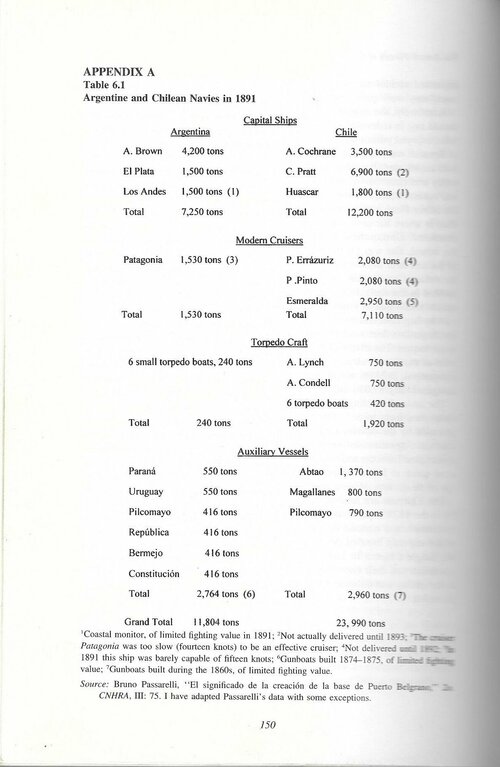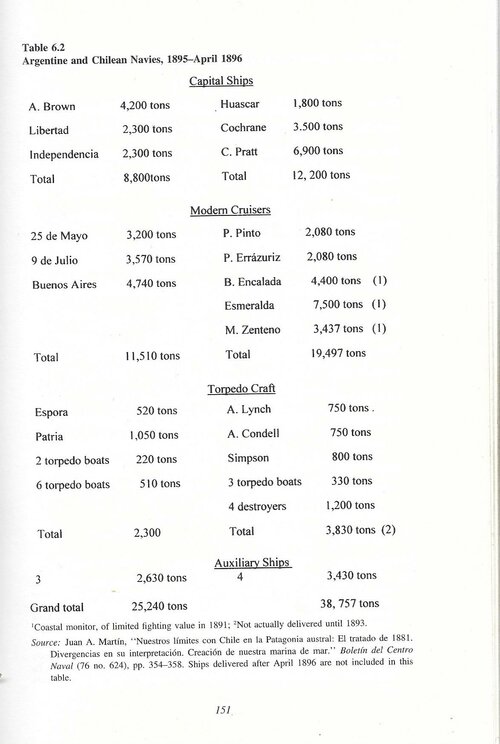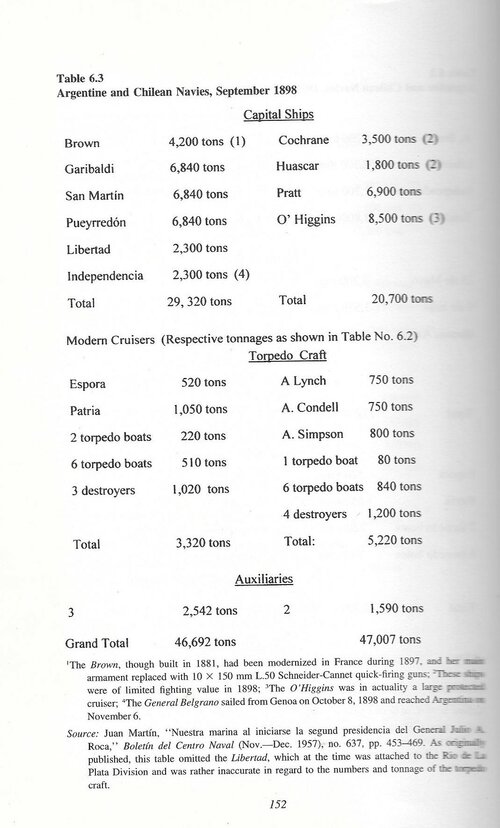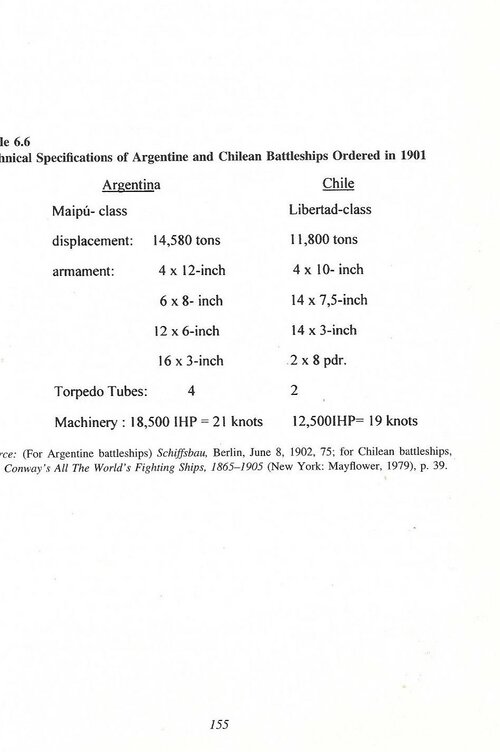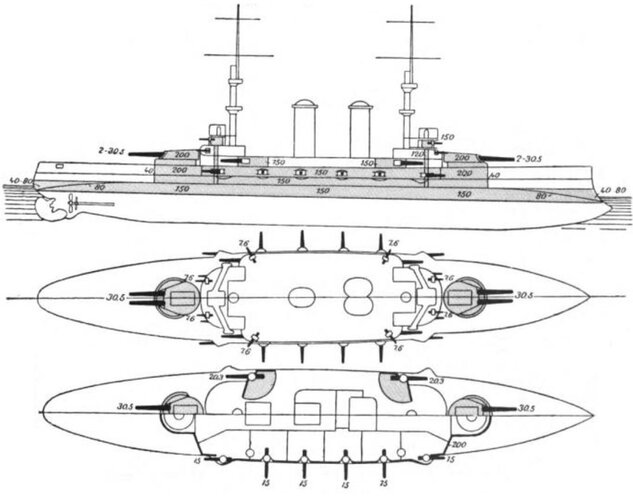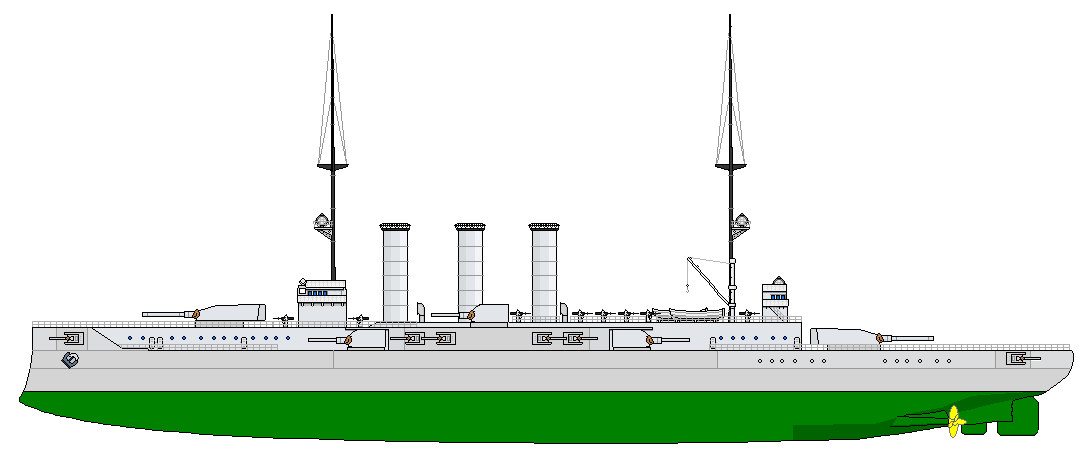During the War of the Triple Alliance (1865-1870) the Argentine navy consisted of a few packet steamers armed with a couple of small-bore muzzle-loaders. The leading naval and military power in the region was Brazil. After the war, Argentina and Brazil sought to establish hegemony over defeated Paraguay and by 1871 seemed quite probable and Argentina began to arms rapidly. The Army, which had received its first Krupp field guns and limited quantities of breech-loaders began to re-equip with the Remington rifle,Forehand & Wadsworth revolvers and an additional quantity of Krupp field guns .During the Sarmiento Administration the navy received its first modern warships, built from the keel-up as such. They ships were collectively known as "Sarmiento's Fleet"-. . They included a pair of turreted monitors, El Plata and Los Andes,four Rendel -class gunboats armed with Armstrong 11-inch muzzle loaders, the Constitución, Pilcomayo and Bermejo) and two corvettes ( Paraná and Uruguay). The navy also contracted a number of former Confederate naval officers for its Torpedo Branch (mines in those days were known as floating torpedos) and a torpedo depot ship, the Fulminante and some spar-torpedo boats were acquired in 1875. Furthermore, the strategic island of Martín García, key to the River Plate basin was armed with proper guns for the first time (Rodman and Parrot 10-inch muzzle-loaders) In 1874 these were reinforced by a battery of Armstrong 7-inch rifles firing 150 lb. Palliser shells. An additional battery was installed in 1877. The River Plate was he historical scenario where all previous conflicts in Argentine history had taken place,, and also the centre of hall economic activities. Since the River Plate system is not unlike the Mississippi river and affluents, which the Confederates had so well defended against a far more powerful Union navy, the choice of coastal ironclads to be deployed in combination to a system of floating mines and heavy artillery was logical. The border dispute with Chile, however drove home the need to build a blue water navy once again. Among the ships ordered in 1880 was the ironclad ARA Almirante Brown, which according to British professional journals, was more powerful that any of the Chilean vessels. The situation changed radically by the 1890s
You are using an out of date browser. It may not display this or other websites correctly.
You should upgrade or use an alternative browser.
You should upgrade or use an alternative browser.
The Argentine battleships ARA Chacabuco and ARA Maipü
- Thread starter Badner
- Start date
Whereas the Chilean fleet was composed of protected cruisers, the Argentine navy acquired four armored cruisers of the Garibaldi class, fast, well protected and well-armed. In an intent to regain her lost naval superiority, in 1901 the Chilean govt. ordered two 12, 000.ton battleships The Argentine responded by ordering a part of 15,000 battleships and six destroyers of the Nembo class in Italy. Eventually, the border dispute was settled by the mediation by the British Crown.As a result, the Pacts of May were concluded, and these included a agreement on naval disarmament, by which both nations agreed to dispose of their ships ordered or under construction. Chile sold its light battleships to the Royal Navy, the Argentine sold two of the improved Garibaldi to Japan, and rescinded construction of her 15,000 tonners.
According to a letter from the Italian naval historian, Aldo Fraccaroli, the Chacabuco class battleships ressembled the Italian Regina Margherita class.
According to a letter from the Italian naval historian, Aldo Fraccaroli, the Chacabuco class battleships ressembled the Italian Regina Margherita class.
Attachments
Last edited:
COLDOWN
ACCESS: Secret
- Joined
- 12 November 2019
- Messages
- 211
- Reaction score
- 239
Regarding the Argentine Maipu class
I made a conceptual illustration of the semi-dreadnoughts based on George von Rauch's research and his publication in the Naval Center Bulletin about the Garibaldi class.
The battleships "Maipú" and "Chacabuco" were intended to rival the Chilean battleships "Constitución" and "Libertad". They were pretty similar to the italian "Regina Elena" and "Regina Margherita" classes.

The 1902 Pacts of May cancelled the formal order and the produced equipment was derived to the italian "Roma" battleship.

There are at least 3 other configurations of what this battleship could have looked like, but the one mentioned by GVR seems to be the best equipped, even though it hasn't been illustrated in any publication.
//
Another Schiffbau design mention was:
130 m x 24 m x 8.3 m
14,000 t
18,000 hp
21 kn
150 mm belt/citadel/turret
80 mm deck
4 x 305 mm
4 x 200 mm
12 x 150 mm
16 x 76 mm
4 x TT
Coal (normal) 1000 t
20 months of work.
So the illustrated warship must pretty be similar.
I made a conceptual illustration of the semi-dreadnoughts based on George von Rauch's research and his publication in the Naval Center Bulletin about the Garibaldi class.
The battleships "Maipú" and "Chacabuco" were intended to rival the Chilean battleships "Constitución" and "Libertad". They were pretty similar to the italian "Regina Elena" and "Regina Margherita" classes.
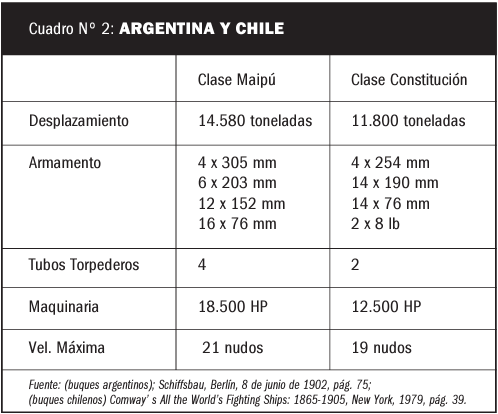
The 1902 Pacts of May cancelled the formal order and the produced equipment was derived to the italian "Roma" battleship.
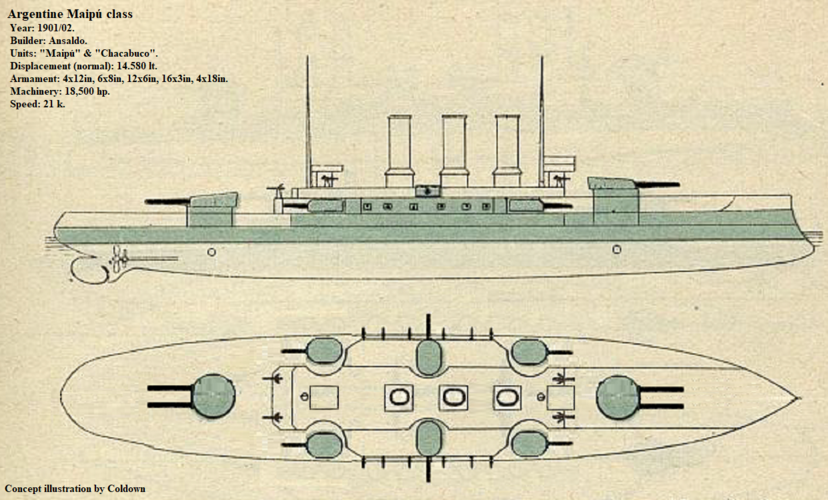
There are at least 3 other configurations of what this battleship could have looked like, but the one mentioned by GVR seems to be the best equipped, even though it hasn't been illustrated in any publication.
//
Another Schiffbau design mention was:
130 m x 24 m x 8.3 m
14,000 t
18,000 hp
21 kn
150 mm belt/citadel/turret
80 mm deck
4 x 305 mm
4 x 200 mm
12 x 150 mm
16 x 76 mm
4 x TT
Coal (normal) 1000 t
20 months of work.
So the illustrated warship must pretty be similar.
Last edited:
Dilandu
I'm dissatisfied, which means, I exist.
Thanks! May I use it to illustrate what is known about those warships? With proper credits and references, of course.There are at least 3 other configurations of what this battleship could have looked like, but the one mentioned by GVR seems to be the best equipped, even though it hasn't been illustrated in any publication.
COLDOWN
ACCESS: Secret
- Joined
- 12 November 2019
- Messages
- 211
- Reaction score
- 239
No problem, just share us a link here!Thanks! May I use it to illustrate what is known about those warships? With proper credits and references, of course.There are at least 3 other configurations of what this battleship could have looked like, but the one mentioned by GVR seems to be the best equipped, even though it hasn't been illustrated in any publication.
Dilandu
I'm dissatisfied, which means, I exist.
Thank you!No problem, just share us a link here!
Dilandu
I'm dissatisfied, which means, I exist.
Just a small detail I was informed about by my friends:The 1902 Pacts of May cancelled the formal order and the produced equipment was derived to the italian "Roma" battleship.
Apparently, in 1902, Russian admiral Nikolay Skrydlov received an offer from Italian admiral Camillio Candiani (who was Skrydlov personal friend) to buy a "Roma"-class battleship, which was under construction for Argentinean Navy. Russia declined the offer, because after some investigation it was found out that battleship in question wasn't even laid up yet, only some components were ordered.
The sourse is V.L. Kofman's book "Bronenosnye Kreysera tipa Garibaldi" (rus. for "Garibaldi-class armored cruiser")
COLDOWN
ACCESS: Secret
- Joined
- 12 November 2019
- Messages
- 211
- Reaction score
- 239
Kofman's work is precisely the most complete on the Garibaldi class. Recently I was reading some sections to complete the article I did on Argentine cruisers in the 1930s and those paragraphs were ignored!
But thanks to your comment I will take them as a new source of information to understand this pair of battleships. I should have learned Russian, there are many writings of the time that I can't enjoy without google translate.
But thanks to your comment I will take them as a new source of information to understand this pair of battleships. I should have learned Russian, there are many writings of the time that I can't enjoy without google translate.
COLDOWN
ACCESS: Secret
- Joined
- 12 November 2019
- Messages
- 211
- Reaction score
- 239
Excellent approach.Battleships ARA Maipü
I consider that moving 4 152-mm guns to strengthen the bow and stern shot was more than successful. In fact, in the Mitre/Rivadavia and Roca/Moreno, one of the Argentine requirements was that the 152-mm secondary battery should be able to do the same, as it did not happen in all previous argentine ships. And I forgot about that detail when I did the previous job.
Similar threads
-
Early submarine designs (rare, unusual, prototypes and evolutionary dead ends)
- Started by covert_shores
- Replies: 14
-
-
-
-

